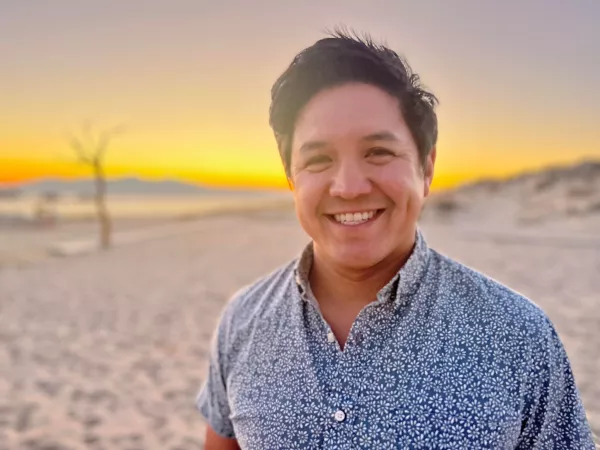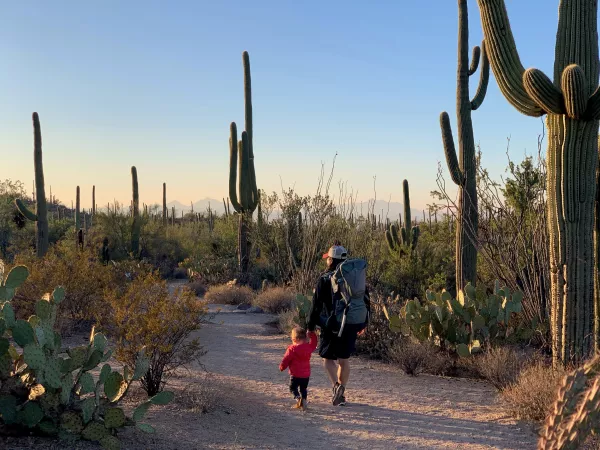Studying How Built Environments and Nature Affect Health


Naxos in the South Aegean Sea.
Dr. Peter James has a passion for environmental health and epidemiology. He has dedicated his career to studying the influence of geographic contextual factors on health behaviors and chronic disease. This interest in the environment and its impact on health did not happen overnight, but instead developed gradually through a series of experiences.
Growing up in a major metropolitan setting, he says, his first education about the “environment” was not adventuring into the great outdoors, but rather observing the evolution of the city. “I was raised in Washington DC, in a very urban setting, and I don't think that I grew up being extremely passionate about the environment. But, as I watched the city change over time, I grew more and more interested in how these changes impacted people,” says Dr. James. In high school, he learned more about factors of environmental sustainability, and as an undergraduate, he majored in environmental science and history of science. He later moved to New England, where the cold winters influenced him to learn to ski and the warmer New England months allowed him to spend more time outside of the city, hiking with friends. The confluence of these experiences helped Dr. James realize how vital exposure to different types of natural environments could be.
He takes this journey into account when defining what the environment means to him. “‘Environment’ is a loose term. It's not just nature. It’s also the spaces we create and live in within nature: it’s the built environment, which encompasses all human-made aspects of the environment. It could be the way that we create our streets and our transportation networks. It could be about the socioeconomic factors and the distribution of different resources in our communities.”
Dr. James believes that equity, community, and how people interact with each other are all important components that help comprise the meaning of the word “environment.” He considers himself an extrovert, which is one of the reasons why he is especially interested in looking at people’s interactions with each other within the environment.
'Environment’ is a loose term. It's not just nature. It’s also the spaces we create and live in within nature: it’s the built environment, which encompasses all human-made aspects of the environment. It could be the way that we create our streets and our transportation networks. It could be about the socioeconomic factors and the distribution of different resources in our communities.
“Living in cities and living amongst other people is extremely important to me,” he says. He wants people to understand that the environment is complex because the places in which people live influence their overall health, well-being, and behaviors–everything is interrelated. It is this complexity, along with how our understanding of its influence on our lives has evolved, that fascinates Dr. James. “It’s something that really keeps me happy and excited to go to work every day,” he says.
Using Mobile Health Technology to Study Environmental Exposures
Mobile health technology—smartphones and smartwatches, along with consumer wearables like the Fitbit®—has opened new doorways to tracking personal health. But the data these devices contain also tell a story about environmental exposures and what they mean for health. Dr. James collects this data for his research and has found ways to derive meaningful patterns from it. For example, he has found that GPS data, or location services from smartphones, is useful because it can be a close proxy to true environmental exposure. It allows him to look at the places in which people spend time as they move through space. “When you think about GPS data, coupled with the minute-to-minute level heart rate step data, we get new insights into how the environment influences behavior that we really can't get any other way. I think that's the strength of mobile health technology,” he says. Other embedded sensors, such accelerometers found in smartphones and trackers, can better show people’s levels of physical activity or sleep.
An added benefit, he notes, is that many people already carry their smartphone around with them or wear smartwatches, which makes the burden on the participants lower, while researchers can still get useful insight into people’s behavior. Dr. James has utilized data from wearable technology in several studies, including the Nurses' Health Study 3 (NHS3) Mobile Health Substudy, a nationwide prospective cohort study, and one of several cohort studies Dr. James has worked on. The NHS3 Mobile Health Substudy required participants to use a smartphone application and wear a Fitbit® for seven-day periods, four times over a year, to measure minute-level location, physical activity, heart rate, and sleep. These data will be used to provide insight into what environmental factors influence physical inactivity and inadequate sleep, which are dominant risk factors for cancer.
Environmental Exposures and Disease
Dr. James has also examined incidence of chronic disease and environmental exposures. One of the largest studies he has worked with is the original Nurses’ Health Study, a cohort of 121,701 female nurses across the entire U.S. In his work on one study, Dr. James and colleagues observed that women in the U.S. who lived in homes surrounded by more vegetation had lower mortality rates than those who lived in areas with less vegetation.
The study also examined how vegetation, or “greenness,” can potentially lead to lower mortality rates. Improved mental health, measured through lower levels of depression, was estimated to explain nearly 30% of the mortality benefit from living around greater vegetation. As Dr. James explains it, “We were surprised to find evidence that a large proportion of the apparent benefit from high levels of vegetation seems to be connected with improved mental health.” Increased opportunities for social engagement, higher physical activity, and lower exposure to air pollution may also play a smaller, but important role.
We were surprised to find evidence that a large proportion of the apparent benefit from high levels of vegetation seems to be connected with improved mental health.
Dr. James has also worked on the Nurses’ Health Study II, a cohort of 109,672 U.S.-based female nurses, studied from 1989 through 2013. There, he examined exposure of light at night and found that people living in areas with higher levels of light at night had higher breast cancer risk. Exposure to light at night can disrupt circadian patterns and hormone regulation, which might lead to breast cancer risk. These findings from the Nurses’ Health Study and Nurses’ Health Study II suggest that there are several factors at play in the link between environmental factors and chronic disease risk.
Addressing Disparities in Environmental Exposures
In every exposure Dr. James has examined, including green space, noise, and walkability, he has noticed a common thread: how these measures cut across racial and socioeconomic lines. Diversity, equity, and inclusion are woven into Dr. James’ research as he looks at the connections between disparities and environmental exposures. For example, he has looked at how noise is distributed inequitably using satellite-based measures and has seen that noise pollution is more common in communities of color and racially segregated cities. These evidence-based insights into what drives environmental health disparities propel Dr. James’ commitment to not only understanding their causes, but also to expanding representation in his study populations.
To further focus on representation, Dr. James is also hoping to work with more participatory action research, a collaborative framework of working with communities to identify their interests and concerns. His goal is to conduct research with those communities to emphasize participation and action by communities affected by his research. He is intentional about interacting with others in the community and has previously worked with the Metropolitan Area Planning Council, Boston’s Regional Planning Agency, to help directly influence policy. In working with policymakers, he aims to reduce these environmental disparities and encourage equitable access to nature.
Disseminating His Research
While his research is rooted in the world of academia, Dr. James believes its greatest impact lies in spreading the message beyond colleagues in the field. Therefore, he also aims to diversify his audience, train the next generation of environmental epidemiologists, and put what he learns into everyday practice.

Arizona on an RV road trip to California
In addition to increasing diversity in his study populations, he also aims to reach a larger, more diverse audience. It is fundamental, he says, to translate research and disseminate it to a lay audience whenever possible. He wants others to be aware, informed, and excited to learn about topics related to environmental health. Communicating to the masses is the future of science, and the key to enacting change.
Outside of his research, Dr. James hopes to develop a Center for Nature and Health in the Department of Population Medicine. He also developed and leads a course on the built environment, nature, and health at the Harvard T.H. Chan School of Public Health, where students learn how to study the influence of built and natural environments on an array of health outcomes, critically assess the evidence behind associations observed in the literature, and explore the policy and decision-making processes that facilitate built and natural environment changes.
It is evident that Dr. James’ work has had a huge influence on his life in many aspects. He has dedicated his career to measuring how nature affects health and quantifying the health benefits of nature. Even as his research has evolved and he continues to grow in his learning, one of his core beliefs that has stayed constant is that nature is an essential part of our lives. He finds that he applies what he learns to everyday life and has become much more intentional about finding little ways to explore nature ever since starting his career, whether it be through visiting a park, or walking along the Charles River with his kids to stop and smell the flowers. Dr. James has both the work experience and lived experience to conclusively say, “The built environment around you influences your happiness and, subsequently, your health.”
Follow Dr. James on Twitter | Dr. James in the Media | Dr. James' Publications